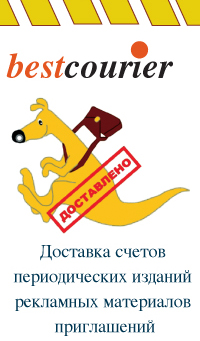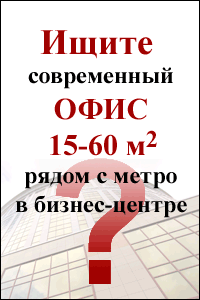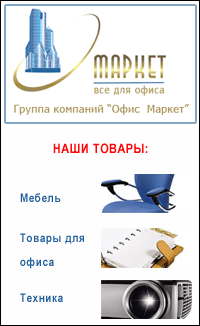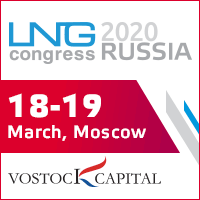TANECO: Everything is under control
Tags:
TANECO

Tatneft has used the latest and most advanced environmental protection technological expertise in the construction of its new oil refinery. Built by Tatneft, the TANECO modern oil refinery complex was a breakthrough project in the oil industry in the whole of the former Soviet space.
The owner’s special pride is the project’s environment friendly component. The main principle used during the facility’s design was “don’t harm [the environment]."
Clean air and water
Taking into account this principle the latest solutions and integrated approach were used right from the beginning in the project and throughout the entire production chain. For example, the protection of the atmospheric air is achieved in a number of ways. Consequently, all the refinery processes take place in fully sealed, air-tight facilities.
The entrapment of vapors from reservoirs, with raw materials and finished products, is achieved with the help of a roof with floating pontoons and a nitrogen cushion. Possible dust emission during loading/unloading of reagents is fully suppressed by an aspiration system with bag filters. To reduce leaks on the railway trestles, oil and related products are poured under a liquid layer into the lower parts of tankers.
“TANECO’s facilities are an excellent illustration of a rational relationship with the nature’s “consumable gifts,” as a complex approach, comprising highly effective methods, such as membrane technology, coal sorption and ultraviolet disinfection, has been used in this project.”
A program of environmental safety has been in place at TANECO since 2011, which is expected to last till 2015. Specifically, special attention has been focused on further development of efficient use of water resources in TANECO. Today, TANECO’s resources treatment facilities can be called an excellent illustrative example of a rational relationship with the nature’s “consumable gifts.” In this project, a complex approach, comprising highly effective methods, such as membrane technology, coal sorption and ultraviolet disinfection, has been used in TANECO’s facilities.
Until now, there had been no facilities with such multifunctionality, versatility and reliability in the Russian refining and petrochemical industries. Besides, the TANECO’s facilities occupy an area that is eight times smaller in comparison with the conventional analogs. These facilities, according to experts, can serve as a model for new projects across the whole of Russia.
Operations without waste
One of the facilities’ main achievements, according to Zilya Valisheva, the head of TANECO’s Environmental Protection Department, is the “closed-cycle principle” used in the company’s water supply and sewerage system. The application of high technologies enables the facilities to consume only 0.9% of fresh water of the total volume of water needed for operations.
This consequently leads to an economy of about 9.27mln cubic meters of river waters per year, a figure that is comparable to the total volume of water needs in a city like Bugulma. Moreover, an analysis has shown that the quality of water exiting the facilities, after being cleaned several times, is much purer than the quality of water that originally enters the system from the Kama River.
 During production, flooded oil sludge, brine or salty solutions from the demineralization or desalinating machines and excess active sludge and raw sediments are processed and dehydrated in special compact centrifuges. The oil trapped or captured in the cleaning process of oily waste is returned back into the production cycle. The dehydrated residue is subject to biodegradation, which means its decomposition by living microorganisms. Subsequently, the resulting soil is used for other purposes, such as vertical planning of the company’s premises. This innovation eliminates the need for bulky maps of sludge storage pits and sludge fields, while saving the facility’s dehydration space by up to tenfold.
During production, flooded oil sludge, brine or salty solutions from the demineralization or desalinating machines and excess active sludge and raw sediments are processed and dehydrated in special compact centrifuges. The oil trapped or captured in the cleaning process of oily waste is returned back into the production cycle. The dehydrated residue is subject to biodegradation, which means its decomposition by living microorganisms. Subsequently, the resulting soil is used for other purposes, such as vertical planning of the company’s premises. This innovation eliminates the need for bulky maps of sludge storage pits and sludge fields, while saving the facility’s dehydration space by up to tenfold.TANECO’s non-recyclable waste is sent to its special waste polygon or landfill. The facility’s design enables the company to move from the traditional practice of industrial waste disposal via burying [into the ground] to a practice of long-term storage, where such waste will remain [as a potential raw material] until new innovative methods of recycling or recovery will be invented to convert them into commodities for further use. The landfill is designed with a reliable impervious screen that is capable of fully eliminating the likelihood of biological and chemical contaminations of the neighborhood and ground waters.
Full observation
TANECO has implemented a multi-level system of continuous environmental monitoring in its facilities. For instance, the sampling and analysis of the atmospheric air cover 28 potential pollutants on the border of the sanitary protection zone, in nearby villages and the city of Nizhnekamsk.
The control is being done via a mobile ecology and environment monitoring system in a minibus. An automated system allows for round-the-clock assessment of the environmental situations, predictions of pollution dynamics, based on prevailing meteorological parameters, as well as the identification of the sources of environmental pollution and creation of environmental data archives. The controlling gauges are placed on each facility, between the facilities and the borders of the sanitary protection zones.
The company’s modern equipment and related monitoring gadgets are also controlling both surface and underground waters as well as the soil. The samples for analysis are taken from the monitoring wells located along TANECO’s perimeter and around the industrial waste landfill, as well as from the nearby rivers. Over 20 chemicals are analyzed to determine the presence or absence of pollutants in and around the facilities.
Today, TANECO has one of the best industrial environmental monitoring laboratories in Tatarstan. Its arsenal includes the latest generation of devices, such as gas, liquid and ion chromatographs, atomic adsorption and Fourier transform infrared spectroscopy as well as spectrophotometers and automatic titrators, from the world’s leading manufacturers. The application of this rich arsenal guarantees high quality researches, their accuracy and reliability.
The project’s price
The price of TANECO’s environmental safety program did come not cheap. Tatneft had spent over RUB17bn on the construction of all the facilities and environmental conservation programs in the first stage of development, while a budget of about RUB27bn has been set aside for the whole facility.
“TANECO has implemented a multi-level continuous environmental monitoring system. For instance, the sampling and analysis of the atmospheric air cover 28 pollutants on the border of the sanitary protection zone, nearby villages and Nizhnekamsk.”
All these expenses have been duly appreciated by the society. The plant has only been in operation for two years, but it has already won a huge collection of environmental awards at various levels over this period. The most recent example took place in December 2013, when TANECO won the first place in the ECOLeader, a contest held annually in Tatarstan. The company was awarded the top prize, "For the best implementation of technologies for collecting, processing of secondary resources, as well as the application of energy-saving and environmentally efficient technologies."
A month earlier, TANECO also received an award at the Russian industrial ecological forum, titled, RosPromEko-2013, which was held in Moscow. The company was awarded the title of the “Best environmentally responsible regional company.” A year earlier, TANECO was recognized in 2012 as one of Russia’s Top-100 companies in the field of ecology and environmental management.












 Web design,
Web design,